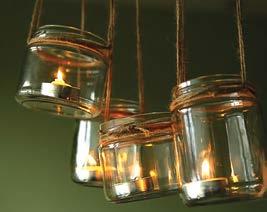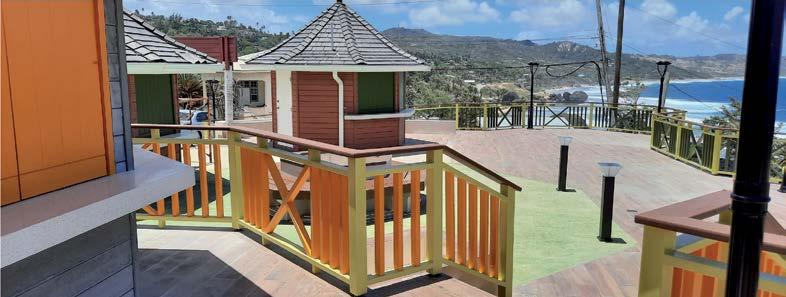


A as an extension of life












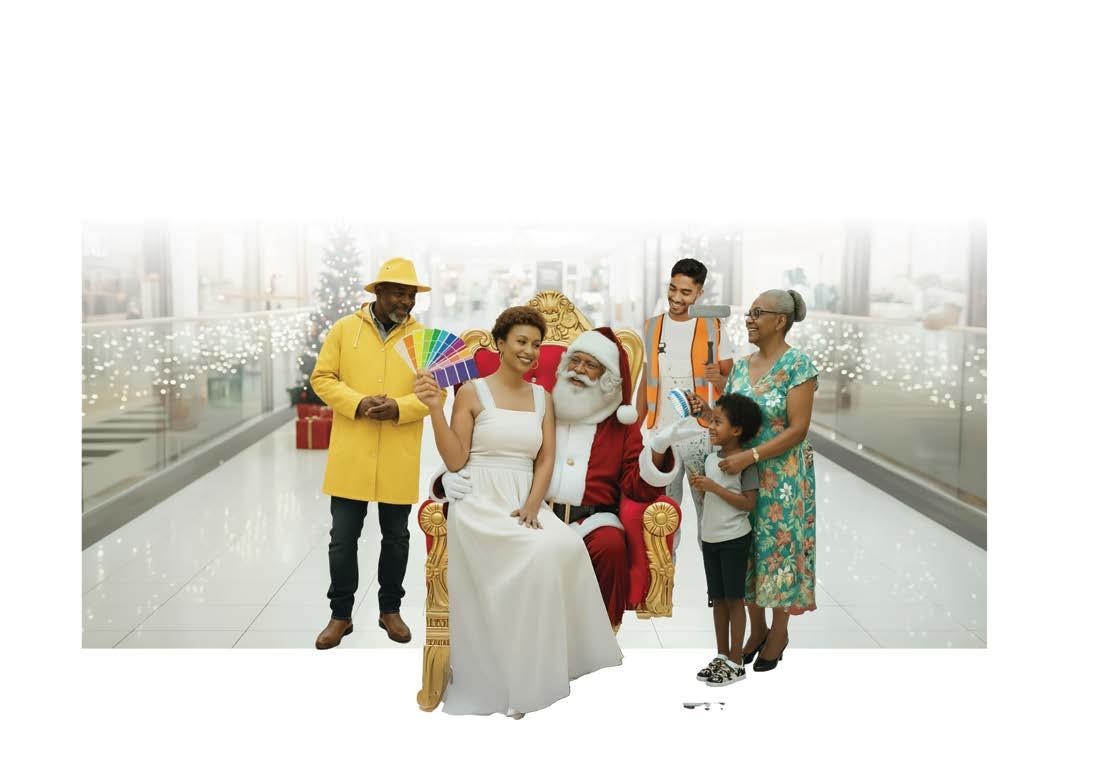
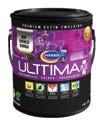

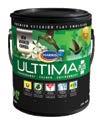












A as an extension of life
























GROUP CEO
Noel Wood
HEAD OF ADVERTISING - NATION GROUP
Paulette Jones
CIRCULATION MANAGER
Adrian Bowen – Tel.: (246) 430-5500 email: adrianbowen@nationnews.com
MAGAZINE COORDINATOR
Julia S. Haynes - Tel.: (246) 467-2896 email: juliahaynes@nationnews.com
Sandy Deane, Dwayne Gibbs, Nick Nunes, Nakiah Thomas-Edwards
PHOTOGRAPHY
Cover – Leslie St John • Abeds •Platinum Imports
DESIGN/LAYOUT: Brian O’Neale
ADVERTISING EXECUTIVES:
Debbie Brathwaite – Tel.: (246) 430-5518
Email: debbiebrathwaite@nationnews.com
Donna Francis – Tel.: 246 467-2868
Email: donnafrancis@nationnews.com
INDEX PAGE ADVERTISING EXECUTIVE
Alison Licorish – Tel.: (246) 430-5552
Email: alisonlicorish@nationnews.com
ADVERTISING COORDINATOR
Wendey Delaney – Tel.: (246) 430-5517
email: wendeydelaney@nationnews.com

Inside Look
The art of beautiful spaces
s we step into the final months of the year, there is no better time to refresh the place we call home. Our October issue invites you to discover the many ways that art, colour and creativity can transform your living space into something truly special.
Lately, I’ve found myself rearranging corners of my own home, swapping out pieces, introducing colour and plants, adding light and realising how small changes can completely change the mood of an area. That sense of transformation runs through every story in this issue.
Our cover story explores the world of art, showing how statement pieces can not only lift a room but also the way you experience it. We sat down with Rae, a passionate art collector and owner of the island’s newest art gallery, who shared just how much art can spark emotion, conversation and completely redefine a home, whether through a single striking piece or a thoughtfully curated collection.
We also turn our attention to how design and sustainability can coexist. A special feature on eco-friendly home hacks, we look at simple yet meaningful ways to live more sustainably, from rethinking materials and how we use them to reducing waste. Plus, we chat with a designer whose work centres on reusing what we already own, proving that style and conscience can go hand in hand.
You will find a feature on colour and mood, and how the vibrant hues we often see in Caribbean life can influence not only the style but the energy within your space. With the festive season on our doorstep, we rounded up the latest home trends to inspire your décor, along with smart do-it-yourself projects to add that personal touch.
Since the entertaining season is around the corner, in the article Mixing Christmas Memories you will find four special drink recipes, including a timeless favourite and a modern indulgence. Whether you are stirring something new or pouring from that trusted bottle of Mount Gay Rum, these beverages are sure to warm the cockles of your heart, as the author so aptly put it.
This issue is a celebration of creativity, culture and the essence of Caribbean living; a reminder that our homes are more than a roof over our heads but rather reflections of who we are and the vibrant region that we get to call home.
Paulette Jones
Smart Homes is produced by The Nation Publishing Co. Limited, a subsidiary of The Nation Corporation, which is a member of the One Caribbean Media Limited (OCM) group of companies. For general info email: smarthomes@nationnewscom. Every effort has been made to ensure that the information contained within this magazine is accurate; however, The Nation Publishing Co. Limited cannot be held responsible for any consequences that may arise from any errors or omissions. This publication cannot be copied in whole or in part without the explicit permission of








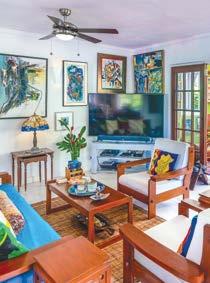
Shaping Your Space with Colour
Gifts/Décor: The Eco-friendly way
Transforming Trash into Treasure
Cosy Christmas Corner
Designing the Future
Living with Art – Rae Skinner’s way
Cleaning for the Holidays
Mixing Christmas memories
Dine in Style – Setting the Scene
Sustainable Hacks for the Festive Season
16 06 40 44 48 10 14 20
THE COVER 30 36
Living with Art: Rae Skinner on bringing Caribbean creativity into the home.








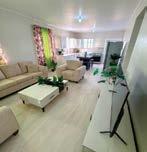






by Sandy Deane
The smaller the room, the less bold colours I would recommend. If you paint all the walls a dark colour, it can feel like the room is closing in on you.
When designing a home, many factors come into play – from furniture to layout, and even the size and orientation of the room. One of the most important aspects that can shape the atmosphere of a space is colour. Interior designer Danielle Gill, who specialises in creating homes that are calm and alluring, shares her insights on how to use colour to make your home a sanctuary.
“It’s called colour psychology. Colour psychology is basically the study of how different colours influence human emotions, behaviours, and perceptions.
“We use colour psychology as leverage to influence the way a space should be experienced or can be experienced, and the way we want the person to experience the space that we’re designing.”
When it comes to colour, Danielle noted that each one has a unique effect.
“Colours like orange and yellow evoke energy and happiness within a home, while cool colours like blue and green are for relaxation and calming. Shades also matter when it comes to colours. So bright and
bold colours, the bright and boldness of the colours actually stimulate activity, while if you use the pastel version of these colours, it would promote comfort and serenity.”
She pointed out that dark colours should not be dismissed since they can actually give the feeling of warmth.
“This is the direction that a lot of influencers are going towards these days. They might not do the entire space in a dark colour, but they will implement it in little details, such as throw cushions or one accent wall or furniture pieces like a sofa,” Danielle explained, noting that people are experimenting more.
For Danielle, finding the right balance between bold and subtle shades is key. This, she suggests, allows homeowners to infuse their personality into their spaces without overpowering them. “If you choose a bold colour, your entire kitchen doesn’t have to be that colour,” she advised. “You can mix and match. For example, your bottom cabinets can be bold while your top cabinets can be light and airy colours, like a shade of white or a variation of the colour used below.”
When selecting colours for your home,
Danielle suggests incorporating your favourite shades through accent pieces while keeping larger areas more neutral. “My advice would be to think it through. Use your favourite hues in accent pieces, but keep dominant areas neutral. You can tweak the colour saturation by choosing either a bold or pastel version of your preferred colour.”
Homeowners should also consider the size and orientation of a room. Danielle noted that smaller rooms need to be careful about colour selection. “The smaller the room, the less bold colours I would recommend. If you paint all the walls a dark colour, it can feel like the room is closing in on you.” To make a space appear larger, she recommends using lighter colours for ceilings and walls to create an airy and spacious feel.
So what are Danielle’s recommendations for some of the most popular rooms in the house, namely the bathroom, the living room and the kitchen?
“Let’s say a powder room, which is the bathroom that everybody uses when they come to your home. In a room such as this, I like to use common colours, such as green or blue. I can then go bold in the accents, where I


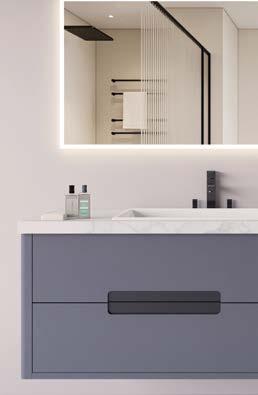
noticed a shift towards calming and soothing colours.
can do like a copper or a gold to really elevate the space.”
“In the living room, a place where a lot of people tend to gather, you don’t want it to be too bogged down with so many colours. So for a room like this, I would do variations of white. There are many whites out there, but I typically do a darker white on the walls and a lighter white on the ceiling to make the space feel elevated.”
She also recommends a similar use of whites in the kitchen to ensure the space feels light and airy.
As Danielle designs homes across the island, she has noticed a shift towards calming and soothing colours. “Barbadians are moving more towards whites and various shades of white, as well as blues and greens,” she shared. “They also prefer neutral colours like taupes and light browns that blend well with darker whites.” This trend stems from a desire for homes that serve as havens from daily stress. “People want to come home to a space that feels safe and calming,” she explained, adding that she believes this will continue to be a strong trend.
For Danielle, the ultimate goal of interior design is to create a sanctuary – a home that provides people with comfort, serenity and joy. While the array of colour options may seem overwhelming, she said homeowners can trust their instincts and thoughtfully choose hues that evoke positive vibes. By doing so, they can transform their homes into spaces that feel like a warm hug, spaces they can hardly wait to escape to after a long day.





by Nakiah Thomas-Edwards

The holiday season sparkles with lights, scents of good-tasting food and the joy of giving. Yet, behind the beauty of Christmas often lies excess, plastic décor, mountains of wrapping paper, and throwaway gifts. Thankfully, with a little creativity, you can celebrate in style while being kind to the planet. From festive décor to meaningful presents, eco-friendly choices can make your Christmas both magical and sustainable.
Eco-friendly décor: deck the halls with nature
Instead of filling your home with synthetic decorations, lean into the warmth of natural, reusable, and handmade items.
If you don’t already own an artificial tree, consider a potted live tree you can keep yearround and replant outdoors after the season
as your Christmas tree this year. Instead of the miniature plastic trees, try using a small rosemary bush in pots. This would also bring fragrance and greenery to the indoors and tabletops.
Dried orange slices, cinnamon sticks, and star anise tied with jute twine create the rustic charm of natural ornaments. Pinecones dipped in a little eco-friendly paint or sprinkled with biodegradable glitter make for beautiful accents.
Swap plastic tinsel for garlands made of fabric scraps, popcorn and cranberries, or upcycled paper. Each year, you can add to the collection and create a family tradition.
Choose LED fairy lights for energy efficiency, and place beeswax or soy candles in glass jars for a cosy glow without paraffin fumes. You can also wrap gifts in reusable cloth, brown kraft paper decorated with
greenery, or even last year’s Christmas cards cut into tags.
These touches not only reduce waste but also give your home a warm, authentic look that feels both elegant and heartfelt.
Eco-friendly gift ideas: presents with purpose
Giving becomes more meaningful when gifts are chosen with care for both the recipient and the planet. Some thoughtful options might just be the best gift this season. Reusable lifestyle items like stainless steel water bottles, bamboo cutlery sets, or beeswax food wraps are practical gifts that help cut down on single-use plastics.
Organic cotton throws, soy candles, herbal tea blends, or handmade soaps wrapped in compostable packaging make soothing and luxurious presents.




Latoya Beckles

The way we decorate our homes is changing. It's no longer enough for art to be simply beautiful; homeowners are investing in pieces that reflect their values. That's why sustainable wall art, made from materials that are recycled, upcycled, or reclaimed, is becoming increasingly popular. Innovators like Latoya Beckles have been making a strong statement about sustainable wall art as she takes her creativity into more homes and businesses around the island.
Latoya, the creative director of LaBeck Creations, has been transforming trash into treasures. Well-known for crafting unique, sustainable masterpieces from recycled glass bottles over the past five years, Latoya, driven by her passion to create beautiful pieces has expanded her brand to include sustainable


wall art. This shift towards sustainability, she says, is not just about creating art; it's about telling a story that resonates with people.
"Sustainable art in our homes, in our offices, in our spaces is a demonstration that we are more conscious of what we consume and how we can protect our environment," Latoya explained.
Her approach to art is rooted in her desire to make a positive impact. "When I see items being discarded, I think about how I can add to my products and make things live again in another form." For her, it's more than décor; it's a living story.
"This isn't just about art on a wall; it's about intention, and I want people to experience beauty that carries meaning. When I work with sustainable materials, I’m not only creating something that looks
good. I’m telling a story about resilience, transformation, and mindful living. That’s what sets my work apart. It feels purposeful and isn’t just for show.”
Latoya uses everyday materials to create her art, and that has included the pesky Sargassum seaweed that inundates our beaches.
"I started collecting seaweed, and I would dry it because it has a smell. I was amazed at the product. I noticed textures and patterns beginning to form. At first, it looked rough, but once treated and sealed, the Sargassum seaweed comes alive with colour and shape. So, what might seem like trash becomes a statement piece, bringing the essence of the ocean into someone's home. For me, that is magic."
Her products have generated


Latoya believes that sustainable art pieces offer a special way to enhance one’s living space.
significant curiosity, and she often finds herself correcting a common misconception about upcycled art. "One of the biggest misconceptions is that it's cheap or less valuable," she noted.
"People sometimes think if something is upcycled, it can't be fine art. But that's not true. It actually opens up more creative possibilities to see potential where others see nothing."
Latoya believes that sustainable art pieces offer a special way to enhance one’s living space. "For some, it's a bold statement about who they are and their concern for the planet. It becomes a conversation starter, as people are always curious about the story behind it. When you bring a sustainable art piece into your home, it doesn't just decorate; it connects you to nature, mindfulness, and something meaningful in your daily life."
More than anything, Latoya hopes her art shifts how people think about consumption. "When someone brings a sustainable piece into their home, it influences their perspective," she says. "They start to see that beauty doesn't always come from brand-new items; it can emerge from something reimagined or recycled." This mindset, she hopes, will inspire people to rethink their consumption habits, what they recycle, and how they design their living spaces. She advises homeowners to look inward: "If you have a piece at home that you've had for a while, why not add your twist by upcycling it?"
The creative entrepreneur is eagerly looking forward to the future. She wants to expand her line into more functional décor: "I want to create tables, lighting, and mirrors. It will be a complete sustainable decor line to choose from. The dream is for someone to walk into a living space and feel the harmony of art and sustainability all around them. That's a balance of beauty and liveliness."
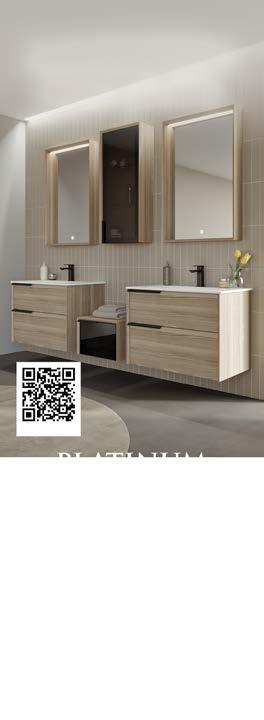



by Nick Nunes

Even the most ardent of us, set in our own ways, must accept change. Our species thrives on change. Routine can be comforting, but it can also become drudgery. The world spins and the seasons change. Even in the Caribbean, the air gets cooler, the nights come sooner, and on the chill of the wind at night arrives some primal call of togetherness.
The Christmas season approaches. With it comes a longing for home and the comfort of familiarity, the expectation of hearty meals and stories from our loved ones who spend the rest of the year at a distance, and the
slight changes in well-known places to make them bright and cosy and safe and warm.
Whether you’re religious or not— whether Christmas is your favourite holiday or not, the end of the calendar year signals a time to come home and reconnect, to share our lives in camaraderie and rejuvenate our most important social bonds.
A wreath on the door, a tree in the living room, lights, baubles, trinkets, and even regular adornments of the house get swapped for a Christmassy theme. Dish towels, tablecloths, curtains, blankets, rugs, plates—these are all run-of-the-mill ways
for a little lift in the everyday of things at Christmas time.
Some of us like to go all-out and stretch well beyond simply decking the halls. Several houses around Barbados take the Christmas spirit to soaring levels with bright displays of flashing lights, twinkling statues that sparkle in the night, and the creation of whole, miniature Christmas villages.
You don’t have to break the bank or woe betide the new year’s electric bill to craft something special, personal, and foundational in memory for the Christmas season. A cosy corner of magic is all you












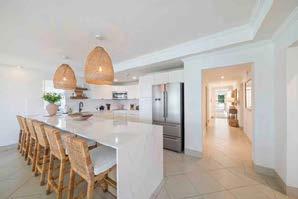


share forever with the ones you love most.
“What is the point of a cosy Christmas corner?” I’m imagining you asking this question. Christmas, like many other ancient holidays, is a time for stories. You may say that Christmas is a time for gifts and for giving— stories are gifts. Stories are treasures that never expire and can never wear out or break, or be taken away. A cosy Christmas corner is a little space to create lasting memories of togetherness and sharing in stories.
Reading A Christmas Carol, watching the Grinch, or simply sitting around with some traditional yuletide tipples while telling each other stories of a more personal nature—a cosy corner is borne in purpose to bring us together, in close quarters, to more intently take part in the lives of our loved ones, even if only vicariously through tales of adventure or recounts of the humdrum.
“But Nick, how do I craft a cosy Christmas corner?” Far from being Saint Nick, I can still tell you it’s quite easy to set up your own special place for the Christmas season as a dedicated spot for delighting in the company of your most treasured people.
First, picking a spot is key. Close to the tree and near enough to a TV and couch is best for this idea. The couch being nearby is obviously for those who would find difficulty getting down to the floor. The TV isn’t just for watching the myriad of Christmas movies that come out every year, though the classics will always be superior. If you’re having a story reading, putting up a video of a crackling fire can enhance the ambience of the evening with something you certainly don’t indulge in in the Caribbean, at least not indoors.
There are many videos of crackling fireplaces that can be found to add something extra to the feel of drinks with family and friends. A little light Christmas music playing at the same time will help the aura of the cosy corner to feel ten times larger than it actually is.
There’s no right or wrong way to create a cosy Christmas corner. It’s about comfort. Soft rugs, Christmas-themed blankets and pillows, maybe even a little nativity scene—basically, the cosy corner is taking all the Christmas stuff that can sometimes be spread thin around the home and concentrating one spot into a little miracle location.
This isn’t a recommendation to strip the rest of the house bare in favour of one corner for Christmas, but to instead think of the home like a body—the blood vessels stretch out like tendrils into every limb, but the heart is where they all concentrate and come together.
Just avoid clutter and clashing colours, remember the rambunctiousness of youth, and maybe keep fragile artefacts out of the way.
A cosy Christmas corner by the tree, a faux fireplace, plump with Christmas coloured pillows and blankets, and ready to receive the jubilant life that comes with togetherness, could be the beginning of new traditions and spark the creation of foundational memories for the younger generations while softening the hearts of those who may have grown weary throughout the years.
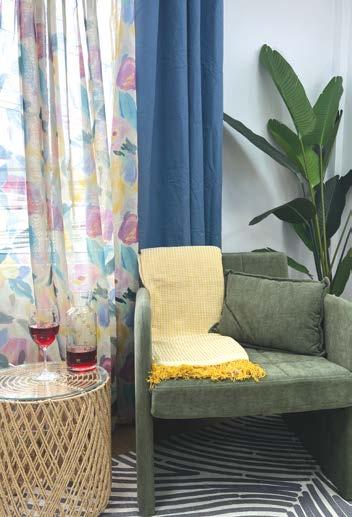



by Sandy Deane
At just 24, Alyssa Inniss-Gittens is making her mark on interior design in Barbados.
As an architectural interior designer who loves solving problems, she creates spaces that improve everyday living, merging local styles with global designs, delivering trendy and timeless finishes.
Her journey into interior design was no well-laid plan. Alyssa, was offered a golf scholarship to the Savannah College of Art
and Design in Atlanta, where she initially wanted to study architecture, but the programme wasn’t available on that campus. Her coach, Wyatt Graff, encouraged her to explore interiors. She did and never looked back.
“So I researched the field and I got really excited about it. I even found this app called TapGlance, and I was just playing with that for a really long time before I started school, and it became like my mini design lab. So that’s where I kind of realised interiors kind of gave

me that balance between my creativity and my problem-solving skills, and I just ended up loving it more.”
For her, her profession is more than just paint and pillows; it enhances people’s lives. She dismisses the common belief that interior design is only about aesthetics.
“Interior design is more than just making a space look good, so it’s not just decoration and adding paint. It’s about how people live in a space, how they work in a space, and how they feel in a space. So it involves things like







functionality, the flow, the comfort, the safety, and the aesthetics. They all have to work together.”
She believes that Barbadians are beginning to embrace the idea that interior design adds genuine value to their spaces.
“It’s not just for luxury; thoughtful design is something you should consider when creating your home. More and more people are realising that good design adds real value to a space. Whether it’s a family home, or a commercial project, an office, it always brings lasting value. Alyssa’s personal style is both modern and transitional—featuring clean lines that exude warmth and versatility— while always reflecting the island’s culture. Her challenge lies in reinterpreting that culture for today’s lifestyles.
“It’s about balancing modern aesthetics with how we live,” she explained.
“This includes breezy, open layouts, natural materials, and spaces that can adapt to socialising, maybe even switching to relaxation.”
To create a timeless look, she suggested keeping the foundation simple so that the culture can shine through in selected accent pieces.
“I usually set a clean, and modern base. In a space, I would keep the
base for a timeless aesthetic so that over time, the base of the room, doesn’t need to change, you just need to change the accent pieces throughout the space. So I might have a room with off white, coloured walls and an accent wall in, let’s say, a neutral green. Over time, that neutral green can be kept and the furniture layout or furniture upholstery can be changed, depending on the person’s needs in the space.The goal is to make the space feel current but still distinctly theirs.”
Despite the beauty of many local homes, Alyssa says overlooking functionality is a recurring flaw.
“Many homes are beautifully built, but the spaces don’t always match how people live. For example, a kitchen or a bedroom’s closet, the cabinetry might lack proper storage solutions or the arrangement might not be suitable for who’s living there. Or sometimes a living room might not have the right furniture layout. So then, family interaction or social interaction just feels off.”In such cases, she said the solution would be to start with function rather than just the form of the space. The key to comfort, she added, is understanding how your family uses a space. And to prevent common

“I would say, just trust your designer’s voice.”
mistakes, she urged homeowners to engage a designer early—ideally alongside the architect for new builds or at the beginning of renovations.
Looking forward, Alyssa expects the design industry will continue to change rapidly, driven by two major trends that will become standard in future homes: sustainability and smart technology.
“I see homes following sustainability trends. I think social media is educating Barbadians on a lot of trends from overseas, and those trends are starting to take form here.”
While she acknowledged that the initial investment can be significant, she highlighted the long-term benefits, pointing out that sustainable products are a smart investment.
“It’s an investment that pays off... not only is it good for the environment, but it also saves you money in the long run because you won’t have to maintain certain materials every year.
The adoption of smart technology is also essential, expanding beyond basic security features. It’s slowly becoming more common here... homes equipped with smart features, whether it’s Alexa connecting to your lighting, appliances or plumbing,” she says.
The combination of smart tech and sustainability will define the next generation of Barbadian homes.
Alyssa’s innovative approach has established her as a notable voice in local interior design. She is not intimidated when interfacing with more experienced colleagues. Rather, she sees her youth as a source of curiosity rather than a drawback. For others looking to enter the field, her advice is simple: “Stay curious, keep learning, and keep an open mind.” She stressed the importance of adapting quickly since the industry is always evolving with “new software, techniques, and trends”.
Most importantly, she urged up-and-coming interior designers to trust their instincts. “I would say, just trust your designer’s voice.”
For Alyssa, her greatest reward is seeing her designs come to life to create functional spaces that make a difference.
“Definitely, seeing how my designs positively impact people’s lives is rewarding. When a client calls me to say they love it, it’s incredibly fulfilling to know that my work improves someone’s daily life.”










































View our online catalogue via www.ncf.bb











by Dwayne Gibbs
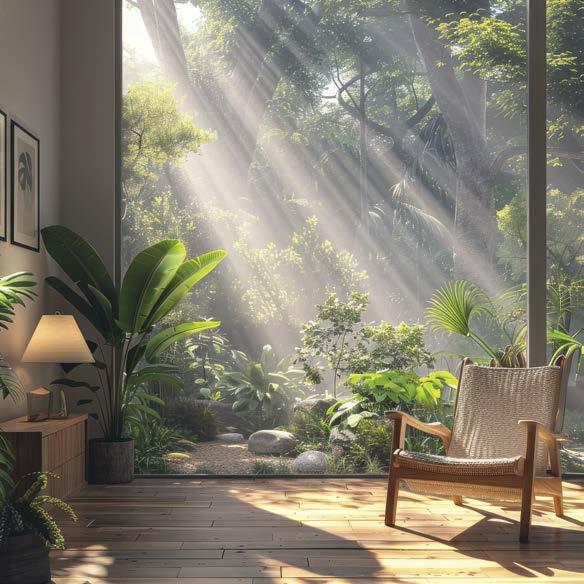

































In today’s fast-paced world, the home is more than just a place to eat, sleep, and store our belongings. Increasingly, it is seen as a personal sanctuary, a space where wellness begins. From lighting that syncs with our body’s natural rhythms to architecture that reconnects us with nature, modern household wellness trends are changing the way we live, breathe, and even sleep. Three of the most influential movements gaining momentum are circadian lighting systems, indoor air quality innovations, and biophilic design in architecture. Together, they are redefining what it means to create a healthy home environment.
It’s no secret that sleep is one of the cornerstones of overall wellness, and it is therefore important to create conditions within your bedroom that are conducive to not only lengthy, but quality sleep.
by Dominique Toppin
Our bodies are hardwired to follow the circadian rhythm, which is a natural 24-hour cycle regulated by exposure to light and darkness. When this rhythm is disrupted, whether by late-night screen time or poorly lit interiors, sleep quality, mood, and overall
health can suffer. A circadian rhythm lighting system is a growing household trend that brings science and design together. These smart lighting setups mimic the natural progression of daylight. In the morning, they emit cool, bluish tones that stimulate alertness and productivity. As the day progresses, the tones gradually warm, transitioning to amber hues in the evening that signal to the brain it’s time to wind down.
Although circadian lighting is experienced throughout the home, bedrooms are the place in which the lighting system will work most effectively. Imagine drifting off under soft, sunset-inspired lighting and waking up to a gentle sunrise simulation instead of a harsh alarm clock. Beyond comfort, research suggests circadian lighting may reduce insomnia, improve mood, and even boost cognitive performance. As consumers grow more health-conscious, lighting is no longer just about ambience; it’s about aligning home design with biology.
The beauty of this modern innovation is that the price point has a considerable range, from very affordable to the higher end of the scale. At the lowest price, manual changing
of the various modes of the bulb via the switch is needed, but it still provides the same effects, going from the blue light to amber and warm yellow to suit your current needs.
While lighting tends to grab attention, the air we breathe inside our homes may be an even more critical factor in wellness. Studies show that indoor air can often be more polluted than outdoor air, thanks to trapped allergens, volatile organic compounds (VOCs) from furniture, cleaning products, and even mould. Given that people spend nearly 90% of their time indoors, air quality is becoming a non-negotiable aspect of healthy living.
Modern households are turning to indoor air quality (IAQ) systems, advanced filtration, purification, and ventilation technologies designed to keep air cleaner and fresher. Unlike traditional air purifiers, newer systems often integrate directly with heating, ventilation, and air conditioning (HVAC) setups. Some even use sensors to monitor pollutants in real time, automatically adjusting to filter out fine particles, bacteria, and gases.
Humidification and dehumidification are
No longer are health and comfort seen as separate from architecture and design.



also part of the equation. Maintaining balanced humidity not only protects the home’s structure but also reduces risks of respiratory issues and skin irritation. The latest systems are smart-enabled, meaning homeowners can track their indoor air quality through mobile apps, making wellness as simple as a glance at a dashboard. The COVID-19 pandemic accelerated awareness of air health, but the trend has proven to be more than a passing concern. Today, clean indoor air is increasingly seen as an essential component of modern wellnessfocused living.
While technology is helping shape wellness at home, design philosophies are playing an equally powerful role. Biophilic design – a concept that integrates natural elements into built environments – is surging in popularity as homeowners seek to reconnect with nature. The philosophy rests on the idea that humans have an innate affinity with the natural world. When our homes echo patterns, textures, and views from nature, stress levels drop, creativity rises, and well-being improves. Biophilic design considers how natural light, materials, and organic forms can be woven into everyday spaces.
Large windows that maximise daylight and frame outdoor views, walls covered in living greenery, the use of wood and stone finishes, and water features that add calming soundscapes are just some of the ways biophilic design manifests in homes. Even smaller touches, like moss panels, nature-inspired art, or curved architectural forms reminiscent of rivers and landscapes, can bring their benefits indoors.
Individually, circadian lighting, indoor air quality systems, and biophilic design represent important steps toward healthier homes. But when combined, they point to a broader shift in how we define wellness within our living spaces. No longer are health and comfort seen as separate from architecture and design; they are deeply interconnected. What’s emerging is a new philosophy of holistic home wellness, where every design choice – from the positioning of furniture to the type of lighting fixtures – contributes to a healthier lifestyle. Technology and nature are no longer opposing forces but complementary tools in crafting spaces that promote vitality, rest, and balance.



by Nakiah Thomas-Edwards

strongly believe that your home and its décor should reflect you, your personal tastes and beliefs,” says Rae Skinner, art collector and founder of Barbados’ newest art gallery, Caribbean Brushstrokes. For Rae, there are no rigid rules when it comes to design, only authenticity.
“I do not follow any specific rules related to design, so my responses to your questions are purely personal. I have been collecting art for 40 years and have focused primarily on the works of Caribbean artists, from the Bahamas and Cuba in the north to the Dutch islands and Suriname in the south,” she told Smart

Homes, explaining that her passion for art began with childhood fascinations – helping her teacher mother create alphabet charts for her classes, collecting Jackson Five pics and 1970s peace and love posters. Her taste has matured over decades of travel, museum visits, and reading.
Along the way, she built a collection that now includes iconic works by Amos Ferguson, Stanley Greaves, Earl Etienne, Albert Huie, Seya Parboosingh, Ras Dizzy, Ras Akyem I, Ishi Butcher, Omowale and Sundiata Stewart and the Trini brothers
Boscoe and Geoffrey Holder, alongside emerging artists from across the Caribbean.
“While not formally trained, I have always had a keen interest and bought what I liked and could afford. All this contributed to my desire to open an art gallery after I retired from a career in commercial banking,” the avid collector told Smart Homes.
Choosing a colour acheme around art
When it comes to walls, Rae is clear: “For me, the art should be the highlight in every room. There is a reason why the wall colour in most art galleries is white. This colour
provides a neutral background and allows the art hanging on it to be in the foreground.”
Though she appreciates bold walls and even wallpaper, she cautions that they demand care when hanging art. “The impact of the art could be lost or create clashes by causing ‘chaos.’ But it can be done in a careful manner to ensure that there is harmony between the pieces and the background,” she advised.
Mixing fine and decorative art
Rae believes in freedom of choice. “Art



One does not have to be rich to collect art. There is art available for everyone’s pocket.
is all about personal choice. I go back to what I said earlier, that a home and its décor should reflect you and your personal taste.” She often blends fine art with decorative pieces but seeks coherence through subtle connections.
“When placed together, I tend to focus on the underlying theme which connects the pieces,” she explained.
Curating a collection on any budget “One does not have to be rich to collect art. There is art available for everyone’s pocket. Buy what you can afford,” Rae insists. Her practical
advice includes posters, prints, limited editions, or even flea market finds.
But she is especially passionate about supporting emerging artists.
“I strongly encourage budding collectors to go to the graduation shows of the BCC art students. . . . . This is the prime opportunity to invest in local emerging talent when their price points are most affordable.”
For larger investments, she advises exploring payment plans with artists and galleries.
“I also believe in good framing and am of the opinion that whilst larger
pieces may not necessarily require a frame, often smaller pieces are enhanced by frames.
Hanging artwork with intention
“Art should always be hung at eye level,” Rae suggests. “However, whilst I follow this as a guideline, it is not a rule which I adhere to, as sometimes, I fill an entire wall (from ceiling to floor) with art.”
For Rae, display style reflects personality: “Some people like symmetrical displays, whilst others prefer less symmetry. The former tends
to be a more formal design, whilst an asymmetrical approach is a more eclectic way to hang.”
She also stresses care for preservation. “In the Caribbean, we have harsh light, so as much as possible, we should use UV-protected glass. . . . Works on paper need to be treated very carefully. Always ask the artist if the paper used is acid-free.”
Lighting that complements art
“Lighting can absolutely enhance a painting,” Rae explains. Spotlights are ideal, but she believes homeowners can achieve the same effect with creativity. “In a home, lamps and light fixtures can be creatively used to achieve the same purpose.” The main rule? Protect the art. “We need to understand which works cannot be displayed in direct light as they could fade,” she advises.
Art that brings rooms to life
For Rae, art is deeply personal.
“The room should reflect the personality of the person that will frequent it the most – their likes, what will identify most with them. The design and décor of the room should bring joy and a smile to the faces of the occupants,” she states. Her own indoor patio, which she lovingly calls the ‘traditional culture room’, is a perfect example.
“It houses pieces with the steel pan, the tuk band, landship, bele dancers, Cuban salsa dancers and traditional TT Carnival characters. That theme is how I chose the pieces. It is a room that I entertain in and it is full of bright colour,” she enthused.
Running Caribbean Brushstrokes has given Rae a front-row seat to the newest waves of creativity. “I am seeing
a lot of artists experimenting with digital imagery as well as reinterpreting traditional figurative works. A lot of young artists are exploring very personal themes – body imagery, gender and sexuality, mental health,” she observed as contemporary trends.
She notes that heritage, climate change, gang violence, and even the impact of tourism on our islands are shaping the stories artists tell.
“There is a growing use of AI in art, and it will be interesting to see how this develops over time. Interestingly, I have not seen a lot of purely abstract work being done, and I wonder why,” she mused.
For Rae, art is more than decoration. It is memory, culture, and conversation. “Your home should reflect you,” she reminds. “And art, more than anything else, makes that reflection vivid and alive.”



How do you style your home? Do you opt for safe, traditional décor, or do you go bold and set your own trends?
Most of us would admit that we stick to the familiar and predictable, but Robert Carter, CEO, Founder and Director of Petals Paradise Inc., suggests it may be time to shake things up.
“To truly make your space reflect your personality, you need to add some flair and be bold. By embracing your unique style and taking risks with your décor, you can create a home that truly feels like yours,” the leading designer said.
Though Robert describes himself as “introverted”, preferring to “do what I need to do and go back in my shell”, his work is anything but reserved.
“The extrovert part of me comes out in my work because my work is known to be very loud.”
Robert’s journey into the creative world was not planned. It all started with a school job attachment at a flower shop because it was the closest artistic option available for the former Alexandra School student who was good at art and craft.
He recalls being a sceptical teenager, wondering what he could possibly do with flowers, but his mentor kept encouraging him to stick with design, recognising the natural skills he didn’t know he had.
“She just kept pushing me, ‘you’re a natural at this, you’re good at this’, so it just grew on me and took me totally by surprise, but eventually I saw the flair that she was talking about and I decided to put a stronger effort into learning the ins and outs of the craft.”
He blossomed and eventually created Petals Paradise in 1999.
His success, which includes 18 years of doing

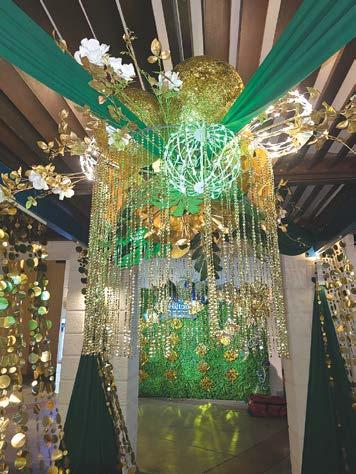



flowers and holiday décor for premier hotels, villas, private and events is built on his reputation of being bold and innovative.
For Robert, the creative process is personal. He does not pre-plan or sketch, preferring to gather all the components and work ‘on the spot in the spur of the moment’.
“When I start, is when the ideas flow and I create,” he reveals, noting that most times, clients simply have to trust him. I just gather all my components, and I do not plan. I would put all of them there, and I would say, ‘You know what? This can work with that’, and I just start to gel them together and create something. I have clients who would say, ‘Can you show us what it’s going to look like?’ Sadly, I can’t because it comes when I start to create, but I can tell you, you’ll be happy when it’s finished.”
He stresses that individuality must define the work: “You need to let the floral design, or your work, speak for who you are... when you’re doing a job, you have to bring your personality into the job, the work, the piece you’re doing. I mean, some people can look at an arrangement or a Christmas tree or a setup and say that’s a Robert set-up.”
He loves the unusual and proudly recalls introducing concepts that initially shock clients, such as the upside-down Christmas tree. “Not only did the solution minimise the floor space needed for the base, it still
delivered the full festive feel. Regardless of whether it is pointing down or pointing up, it still looked like a Christmas tree.”
His decorative concepts for the upcoming festive season will be even bolder. He plans to use a ten-foot lilac tree embellished with fuchsia pink and plum for a client, and a daring black, white, and gold theme for another property.
Robert achieves his signature “Robert piece” by adding the element of surprise— whether it’s an oversized vase, an unusual flower, or a simple decorative stick—to make sure his work is “not just flowers stuck in a vase”.
This unique style was recently on full display for a high-profile Barbados Tourism Marketing Inc. event themed around the globally famous Bridgerton series. Robert used Grecian columns wrapped in a mix of lush florals. He chose a vibrant colour scheme of pinks and purples for high contrast and impact: “I just find pinks and purples and lilacs gel well together. When the sun went down and the lights added to this, it would have picked up and reflected nicely.” He accented the florals with mini lace umbrellas, pearls, and rich gold furniture, to ensure that the look was cohesive.
Robert suggests homeowners should see their space as their own masterpiece and experiment with their décor.
“You can use unusual colour and flair to elevate a simple arrangement, or unique materials, curated art, and bold textures to create a perfect environment. My tip is to step outside of your comfort zone because you will shock yourself when you sit back and look at what you’ve done., you will say, well, you know, I never would have thought to try this or to try that. Whether it be switching up your Christmas tree, whether it be switching up the colour scheme, I mean, step out of your comfort zone and try stuff because it pleasantly works out.”
To stay ahead of the game, Robert, who has been described as the Preston Bailey of Barbados (Bailey is regarded as one of the world’s leading event planners), travels widely and attends tradeshows. He says this allows him to bring “that international wow factor” to the Barbadian market.
“And that’s what a lot of clients like about me; I don’t put myself in a box. If I see it, I go after it. Whether it’s in China, if it’s in America, if it’s in the Caribbean, if I think it will enhance my product and take me to a higher level, I go after it. And that is what I’m known for.”
Robert says creativity is the spark that brings life to a home. He encourages homeowners to let their true selves shine through in their spaces, crafting a home that is full of life.





















by Dwayne Gibbs

As we approach the end of 2025 with the yuletide season on the horizon, some activities are culturally tied to that time of year. Shopping, gift wrapping and cooking are not only markers for the holidays, but are also great shared experiences between family and friends. It’s a very different story when it is time for the most dreaded of all holiday activities, and that is cleaning.
There is nothing particularly glamorous about Christmas cleaning. Yes, you can
whistle while you work like the dwarves in Snow White, or take a more modern approach and run a YouTube playlist to take you through the drudgery of the process. Either way, it will be laborious, lengthy, and you will be very sweaty and exhausted when it is all over.
When approaching cleaning, it is not only important to be mentally prepared, but also in terms of personal protective equipment (PPE). This would include masks, gloves and in some cases the right apparel and footwear.
Cleaning may seem like a harmless task, but it comes with risks that are often overlooked. Dust and mould can trigger allergies and respiratory issues. Certain cleaning chemicals can cause burns, poisoning, or dangerous fumes if mishandled. Add the rush of holiday preparations, and accidents become more likely. Taking a few simple precautions can keep your home healthy and your celebrations worry-free.
Before tackling your holiday chores, consider what personal protective equipment you’ll need. Just as you wouldn’t step into cold weather without a coat, you shouldn’t start heavy-duty cleaning without basic protection.
Masks (preferably N95 or equivalent): These help filter out fine dust particles and mould spores that can irritate the lungs. A standard cloth mask may help with large dust particles, but for mould or heavy dust, a respirator-style mask is best.
Gloves (nitrile or latex): Protect your skin from harsh chemicals, bacteria, and mould. They also prevent dryness and irritation that come from repeated contact with detergents. Safety goggles: If you’re using cleaning sprays, goggles can prevent chemicals from splashing into your eyes—a common but preventable accident.
Long-sleeved clothing: Helps shield your skin when scrubbing areas with mould or using strong cleaners.
Now cleaning has a few stages, there is the removal of excess and unwanted items and placing them into garbage bags, there may be some sweeping, vacuuming and mopping, but often there is the heavy-duty stuff that requires the use of cleaning agents with unlimited elbow grease. Bleach is a staple in most homes for sanitising and stain removal. Vinegar is another multi-purpose household product with a lot of versatility. Cream cleaners, powders and sprays also factor heavily into the cleaning process, but it is very important to protect yourself by keeping certain rules of thumb in mind.
Just like your favourite spirits during the holidays, it is ill-advised to combine cleaning agents despite the temptation to create an

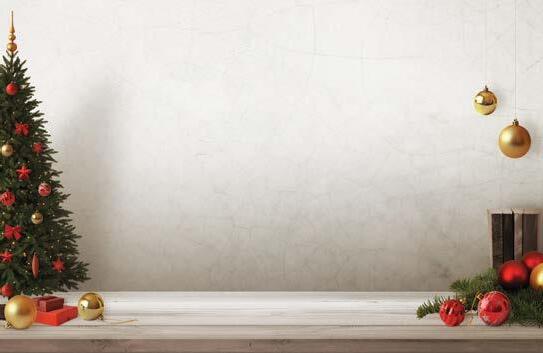







even more powerful concoction for optimum effect. Your eyes, skin and respiratory system are all prone to harm if certain compounds are combined, even with PPE in tow. Bleach and ammonia create chloramine gas, which is a toxic substance that can lead to coughing, chest pain, and, in severe cases, hospitalisation.
Conversely, bleach and vinegar create chlorine gas, which has practically identical effects on the body to chloramine gas. Additionally, combined cleaning products can over-concentrate fumes, causing dizziness or nausea. Beyond personal health, these chemical reactions can also release pollutants harmful to the environment. A safer alternative is to use one cleaning product at a time and follow the manufacturer’s directions carefully, especially when it comes to product dilution.
So far, we have tackled relatively basic cleaning in terms of dust, stains and restoring surfaces to their original state. Following the above instructions should ensure a safe and successful outing. When it comes to mould, this is where there is little margin for error. Some types of mould can be handled yourself, whilst some should be left to the professionals.
One classification of mould that is easy to clean on your own is cladosporium. This type presents as black or green spots and is often found on bathroom tiles, shower curtains, or window frames. With gloves, a mask, and a mild detergent, small areas can be cleaned safely. Another main classification of relatively safe moulds is penicillium, appearing as blue or green fuzz typically found on damp fabrics or food. Using an N95 mask, safety goggles and gloves should be adequate protection from the aforementioned forms of mould and therefore requires no professional services for cleaning.
If you happen to encounter mould that is slimy and black, it is very likely to be stachybotrys chartarum, which releases mycotoxins that can cause severe respiratory issues and should never be cleaned without professional help. If mould covers an area larger than ten square feet or is inside walls, ceilings, or HVAC systems, it requires specialised removal. Attempting to clean it yourself could spread spores throughout the home.
Because the world has been heading in a more eco-friendly direction for the last few decades, it is important to maintain that mindset when purchasing cleaning products, where possible. Look for biodegradable, non-toxic products as opposed to harsher chemicals, as they are just as effective without adverse effects on the environment. Cleaning with microfiber cloths and HEPA vacuums is much more effective at collecting dust and removes the need for excess chemical use.
Christmas cleaning doesn’t have to come with hidden dangers. By wearing appropriate PPE, avoiding dangerous chemical mixtures, and knowing your limits when it comes to mould, you can safeguard your health while preparing your home for the holidays. And by choosing eco-friendly options, you’ll be giving back to the environment at the same time.
After all, the holidays are about joy, togetherness, and peace of mind. These are things you can’t enjoy if your cleaning leaves you with irritated lungs or unsafe air. So this season, add safety to your holiday



by Nick Nunes
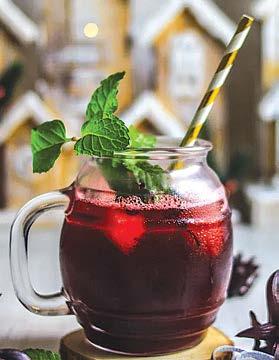
Tis the season to be jolly. Nothing warms the cockles of your heart quite like Christmas time and the tipples of flowing drink that accompany it. Drinks are an important part of many Christmas traditions. This custom of sharing in drinks, especially alcoholic drinks, stretches back aeons.
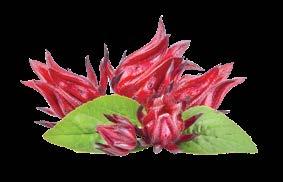
time of year comes with specific scents and tastes that make it unlike any other time of year.
Typically, this time of year is marked by less harvest and seeking methods of preserving. This is the reason ham is such a ubiquitous Christmas fare. Preserving meats and using up stores of harvested fruits, veggies, and spices was a method of tiding people over till the abundance of Spring returned.
For regions of the world that experience harsh winters, that’s also the reason for spicing up your beverages—to impart a little artificial warmth to this time of year for those who aren’t blessed with the beauty of the Caribbean sun.
No matter where in the world you are, this
Mulled wine, eggnog, ciders, ponche crema, sorrel, and ginger beer are all part of the yuletide tradition of sharing in sweet and spiced sips of the Christmas season. Even for the alcohol averse, non-alcoholic options to many of these drinks are easily made—they won’t have the same spicy kick of warmth, but they’re good all the same.
For each of these traditional drinks, one could simply use non-alcoholic wine or simply omit the alcoholic ingredient if it’s a problem. However, that’s not my style, so I’ll be sticking with recommending the booze.
One of the oldest winter-time traditional drinks is mulled wine. It was the ancient Romans who thought of heating wine with spices during the wintertime for a little warmth in a cup to make the cold weather more bearable. Two thousand years ago, they called it conditum paradoxum, which translates to seasoned paradox—a strange
concoction of wine, honey, pepper, mastic, laurel, saffron, and dates.
Today, a more typical mulled wine will consist of the following: 1 bottle of red wine (fruity varieties work best)
•1 orange, sliced
•4 cloves
•2 cinnamon sticks
•2–3 star anise
•¼ cup honey or sugar (to taste)
•Optional: a splash of brandy or rum
Simply combine the ingredients in a pot and heat gently without boiling for about half an hour before serving warm in mugs.
Next up, we have eggnog—another ancient drink that doesn’t sound as appealing as its modern successor. The origins of eggnog come from the medieval era in England. A strange drink consisting of curdled milk warmed with ale or wine and whatever spices were available at the time.




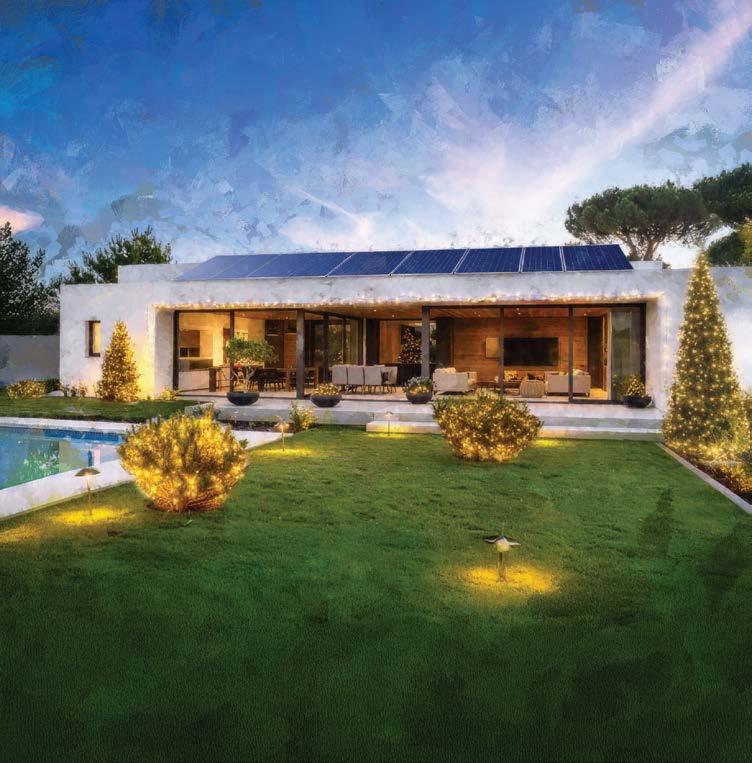






For a typical eggnog, here’s what you’ll need:
• 4 egg yolks
• ½ cup sugar
• 2 cups whole milk
• 1 cup heavy cream
• 1 cup rum, bourbon, or brandy (optional)
• ½ teaspoon nutmeg
• 4 beaten egg whites (optional for frothiness)
Start off by whisking together the yolks and sugar before slowly adding the milk, cream, alcohol, and nutmeg. You could throw in some cinnamon if you like as well. Serve chilled and topped with a dusting of nutmeg. Now, the far superior version of eggnog comes to us in the form of ponche crema. Originally created in 1900 in Venezuela by chemist and perfumist Eliodoro González P., Ponche crema made its way to Trinidad, and its popularity throughout the Caribbean exploded.
For this Caribbean Christmas staple, you will require:
• 6 eggs
• 1 tin condensed milk
• 1 tin evaporated milk
• 1–2 cups dark rum
• Zest of 1 lime
• 1 teaspoon nutmeg
• Dash of Angostura bitters (optional)
Start by blending the eggs till frothy before slowly adding the dairy, then the booze, then the zest and spices. Again, you can add a touch of cinnamon if it’s to your taste. Christmas is a time of traditions, and what could be better than making something your own and unique to your home for the holidays?
An apple cider is simple enough to create:
• 10 large apples, quartered
• water, to cover
• ¾ cup white sugar
• 1 tablespoon ground cinnamon
• 1 tablespoon ground allspice
Bring all that to a boil, turn off the heat and add your favourite alcohol. You could go to the trouble of creating fermented apple cider, but that’s a tedious and long process that I
Probably a thousand years old, sorrel originated in West Africa and has since pervaded the world with its popularity. There is no one way to make sorrel, as families across the Caribbean have taken to adding their own special twists to make sorrel something truly personal for some.
Typically, you will need:
• 2 cups dried sorrel (hibiscus petals)
• 2–3 inches fresh ginger, grated
• 6–8 cloves
• 1 cinnamon stick
• 8 cups boiling water
• 1–2 cups sugar (to taste)
• Rum
Bring the water to a boil and turn off the heat before adding all the ingredients except the rum—let it steep overnight before adding the alcohol amount of your choosing, and there you have it. Add some orange zest, nutmeg, allspice, or anything else that sparks your culinary creativity—it’s yours to drink. Go wild with experimentation and see if you discover something lasting to create a new




We’ve all made it to the final quarter of 2025, and it’s time for celebrations of all kinds. As the year winds down, many of us will host or attend elegant, intimate gatherings. These could be grand banquets, milestone birthday parties, or casual dinners with friends and family. Don’t forget all the Christmas events and end-of-year gatherings.
The most memorable celebrations are shaped not just by the guest list, the venue or the menu, but by the atmosphere. The right ambience and a thoughtful table setting blend natural ease with intentional luxury. This guide offers straightforward tips for both first-time and seasoned hosts to create a scene that is elegant, welcoming, and perfectly suited for your year-end celebration. You will use layering, lighting, and local elements to craft a lasting ambience.
1. The Foundation: Linen, Texture, and the Tropical Canvas
Start by viewing your table as a stage. The secret to a lush, upscale setup is layering textures.
The Tablecloth Alternative: Instead of a heavy, traditional tablecloth, consider a natural runner, like woven jute or crisp, unbleached linen. For a more formal appearance, select a rich, jewel-toned fabric—think deep sapphire or emerald green—that complements your decor. The lighter fabric choice suits tropical climates like ours.
An Eye-catching Placemat: Instead of formal chargers, use rattan, woven sea grass, or unique wood slice placemats. This instantly grounds the setting, adding texture and a subtle, natural feel.
The Napkin: Choose linen napkins in a colour that contrasts with the placemat and runner, such as white against a dark runner or vibrant hibiscus red against natural wood. Tie the napkin with a simple sprig of fresh herb like rosemary or basil, or a piece of dried palm leaf for a touch of organic elegance.
2. The Centrepiece: Rethinking Floral Arrangements
Forget imported flowers: The most beautiful and sustainable centrepieces draw directly from the island’s natural beauty. Keep arrangements low-profile to allow for easy conversation across the table.
Edible and Aromatic: Use small, staggered bowls filled with local limes, starfruit, guavas, or colourful chilli peppers. Scatter small, fragrant white flowers like jasmine or frangipani blossoms around the bowls.
The Water Element: Instead of one large bouquet, use a series of small, recycled glass jars or low-cut rum
bottles as single-stem vases. Fill them with locally grown orchids, anthuriums, or vibrant stalks of ginger lilies.
Tropical Greenery: If you’re using foliage, select sturdy dumb cane/ leopard lily leaves or Elephant Ear/ Dasheen leaves. Cut them at varying heights and lay them down the centre of the table, interspersed with



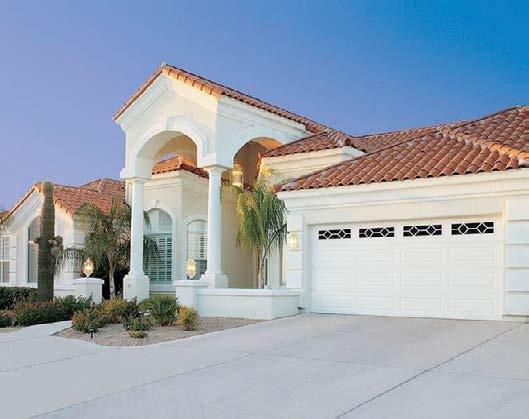





alex@accessallbarbados.comjulie@accessallbarbados.com
www.accessallbarbados.com

small, flickering lights. This creates a natural pathway for the eye.
Lighting is one of the most crucial elements in shaping the atmosphere of a feast. Bright overhead lights ruin the ambience. Your goal is to create soft, flattering, multi-layered light that makes every guest feel comfortable.
Candle Power: Use candles generously. Group tall, elegant taper candles with short, wide pillar candles at varying heights along the table. Be sure to mix in citronella candles, often disguised in decorative glass jars, to deal with inevitable mosquitoes and other insects without overwhelming the visual appeal.
Subtle Glow: Hang fairy lights or warm white string lights low over the dining area, whether on a covered patio or draped across
a dining hutch. The warm glow instantly gives the scene a magical, celebratory feel. Accent Lights: Ensure surrounding areas— like the buffet, bar, or nearby patio—are lit with floor lamps or low-wattage accent lights. This draws the eye around the space and adds depth, so the table doesn’t feel like an island in a dark room.
Enhance the experience with small touches that make the gathering feel unique and intentional. This attention to detail indicates care and thoughtfulness.
Handwritten Notes: Instead of traditional place cards, use sturdy cardstock or even smooth river stones collected from a local beach. Write your guests’ names by hand and place a single high-quality chocolate or a small, unique trinket (like a decorative key or
shell) beside it.
Signature Drinks: Have a single signature cocktail or non-alcoholic punch ready to serve as soon as guests arrive. Use stylish glassware and garnish with fresh mint, citrus slices, or crystallised ginger.
The Music Volume: Curate a playlist of sophisticated jazz, local acoustic music, or classic soul. Keep the volume low enough to function as background texture rather than a focal point. Music should enhance conversation, not compete with it.
By focusing on these layers—from the woven textures and natural colours to the warm, multi-layered lighting—you can turn a simple meal into an immersive, elegant celebration. The resulting setting will feel authentic, effortlessly stylish, and memorable for every guest. Cheers to your celebration.


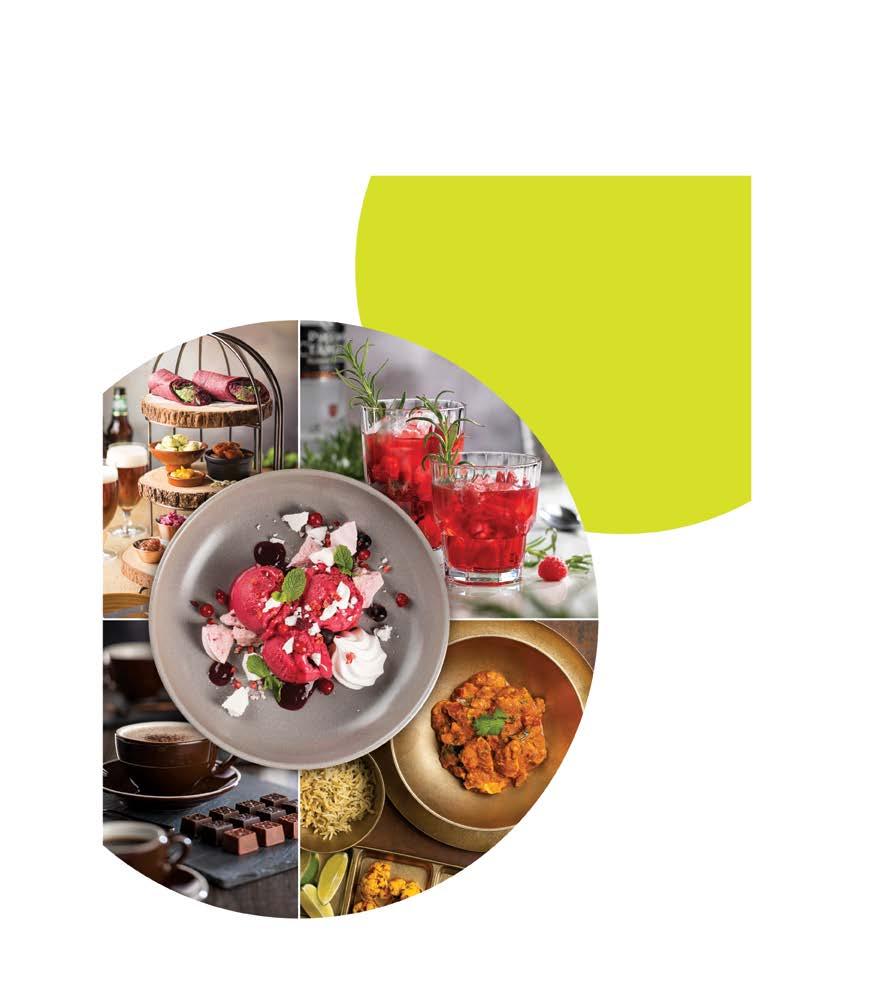








The festive season brings light, laughter, and gatherings, but it often comes with a heavy footprint – excess packaging, energy consumption, and single-use decorations. The good news?
With some simple, stylish swaps, you can celebrate in ways that are both joyful and eco-conscious. Here are practical, creative hacks to keep your holiday beautiful and sustainable.
1. Rethink the Christmas tree
The Christmas tree is often the centrepiece of the season, but it doesn’t have to cost the planet.
Go potted: Instead of buying a cut tree or a new artificial one, choose a live potted tree that you can keep indoors for the holidays, then plant it outside or reuse it next year.
Get creative: For small spaces, try a wall-mounted tree made of string lights, reclaimed wood, or washi tape. It saves space, reduces waste, and can be reimagined every year.
Secondhand chic: If you prefer artificial, look for a secondhand one. A pre-loved tree extends the life of what’s already been produced.
2. Energy-Smart Lighting
The sparkle of lights sets the holiday mood, but they can be energy guzzlers. LED all the way: Switch to LED lights since they use up to 80% less energy and last longer.
Timers and solar options: Set lights on timers to conserve power, or try solarpowered string lights for outdoor décor. Candle glow: Beeswax or soy candles in recycled glass jars create a cosy, natural glow without synthetic fumes.
3. Décor with a Story
Sustainable décor is about reusing, repurposing, and choosing materials with meaning.
Nature-inspired: Pinecones, dried orange slices, cinnamon sticks, and eucalyptus branches bring colour and fragrance while composting easily afterwards.
Fabric magic: Sew garlands or bunting from leftover fabric scraps, old scarves, or even thrifted tablecloths. These soft decorations add warmth and can be reused for years.
Upcycled accents: Transform mason jars into snow globes, wine bottles into candle holders, or cardboard into festive stars. DIY pieces not only reduce waste but also add character to your space.
4. Sustainable Gift Wrapping
Gift wrap accounts for tons of waste each year, much of it non-recyclable due to glitter or plastic coatings. Try these greener alternatives: Furoshiki wrapping: Use cloth, scarves, or tea towels to wrap gifts Japanese-style –functional and reusable.
Plain paper + personality: Brown kraft


• BESSEY Tools –Unrivalled all-steel quality Ideal clamping tools for wood working
• CMT Orange Tools –thin and full kerf blades
• Live Edge Slabs –affordable prices to build your tables and other exotic furniture pieces. Get everything you









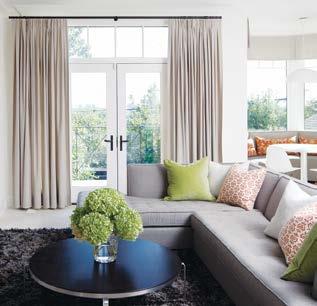

makes each package unique. Repurpose and reuse: Save last year’s wrapping paper, ribbons, and gift bags to use again. Children’s drawings also make charming wraps.
5. Thoughtful Gifting
The best gifts are those that bring joy without adding clutter.
Experiences over things: Gift tickets to concerts, memberships, or cooking classes – memories last far longer than objects.
Eco-Friendly products: Choose bamboo utensils, organic cotton throws, beeswax wraps, or refillable beauty products.
DIY delights: Bake cookies, make herbal teas, or craft homemade candles. They double as décor before gifting, arranged in baskets or jars for table displays.
Shop local: Supporting local artisans reduces carbon miles and keeps money within the community.
6. Entertaining with less waste Holiday feasts don’t have to mean overflowing bins. Real over disposable: Use your everyday plates, cutlery, and glasses instead of single-use items. Mix and match thrifted finds if you need extras.
Plan portions: Avoid food waste by planning servings carefully, and send guests home with leftovers in reusable containers.
Seasonal & local: Choose ingredients that are locally
grown and in season—better for the planet and fresher on the plate.
7. Eco-advent calendars
Skip single-use plastic calendars and create one that lasts.
Reusable bags or boxes: Fill cloth bags or small boxes with treats, notes of kindness, or activities. Refill each year with different surprises.
Themed calendars: Try a “gratitude” version where each day encourages reflection or giving back.
8. Decor that doubles as gifts Think multi-purpose when decorating.
Mini succulents or potted herbs can line a table as centrepieces, then go home with guests as gifts.
Homemade ornaments, clay stars, hand-painted baubles, or wood carvings can adorn the tree before being gifted.
Edible décor, such as cookie garlands or baskets of preserves, adds festive flair and serves as take-home treats.
Sustainability doesn’t mean less beauty or joy; it simply means celebrating with intention. By choosing natural materials, reusing what you have, and gifting with care, you create a holiday that is rich in both style and meaning.
This season, let your home shine with warmth and creativity while giving the greatest gift of all: a lighter footprint on the earth.
Try a “gratitude” version where each day encourages reflection or giving back.
Small swaps = big impact. Celebrate with style and sustainability! Choose a potted tree you can replant or reuse each year.
Switch to LED or solar lights and set them on timers.
• Decorate with nature, pinecones, dried citrus, mahogany pods, eucalyptus.
• Repurpose jars and bottles into candle holders or vases.
• Wrap gifts in fabric, scarves, or kraft paper; ditch the glitter wrap.
• Save and reuse ribbons, bags, and wrapping paper from previous years.
• Gift experiences like classes, concerts, or spa vouchers instead of clutter.
• Plan portions carefully to avoid food waste at festive dinners.
• Use real tableware instead of disposable plates and cups.
• Let décor double as gifts, mini plants, handmade ornaments, or edible displays.
